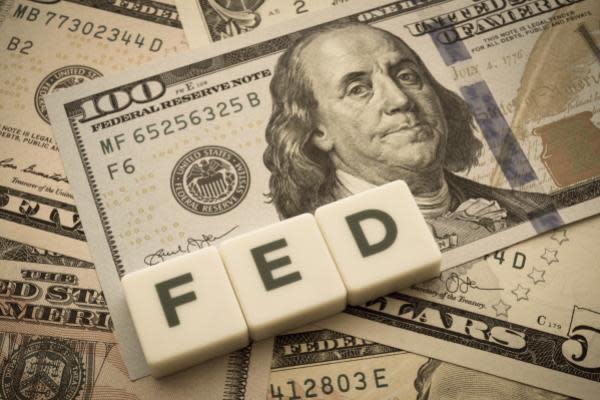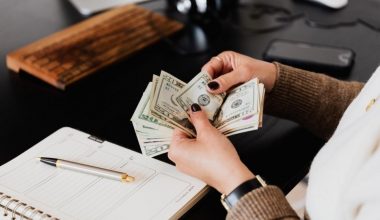An increase in the interest rate lenders charge borrowers or issuers of debt instruments causes a decline in the demand for borrowing and an increase in the demand for investments. In contrast, an increase in the inflation rate indicates a change in the price of goods and services due to inflation, signifying an increase in price and demand for various goods.
Statistically, interest rates are currently at 4.25 percent, and year-over-year inflation has decreased from 11.1 percent in October 2022 to 10.1 percent in March 2023.
However, while a rise in interest rates can slow inflation, it also drives up the cost of borrowing money. Let’s analyze this more closely; the relationship between interest rates and inflation.
What Does Inflation Mean?
Inflation is the rate at which prices for goods and services go up. When prices go up, the value of a currency goes down because it can’t buy as much. Keeping the inflation rate within acceptable limits is essential for an economy to work well.
Let’s use an example to show how inflation works: in 1990, a liter of gas cost $40, so if a man spent $100 a day on gas for his car, he could buy 2.5 liters. If he spends $100 on gasoline, which costs $90 per liter right now, he will get 1.1 L of gas. Even though the value of $100 hasn’t changed, it was worth less than 28 years ago, so he can buy 2.5L of gas for the same price as 1.1L today. This is inflation.
What Is a Rate of Interest?
When a lender gives money to a borrower, the interest rate is what the lender charges. The interest rate greatly affects the country’s economy and investments like stocks and bonds.
Two things are taken into account when figuring out the interest rate.
- Capital Availability: If the interest rate is high, it costs a lot to borrow money.
If the interest rate is low, bank customers won’t get enough for their money, making them less likely to keep it in the bank. Because of this, the bank won’t have any money.
If money is cheap, people will be more likely to go to the market to get money.
Because of this, the value of money will go down. It will make prices go up. - Loans and deposits have different interest rates: The interest rate on loans is high, while the interest rate on deposits is low. The interest rate is the cost of holding or lending money. It is also the cost of putting money in a bank account or borrowing money.
How Inflation and Interest Rates Work Together
The Quantity Theory of Money says that inflation is caused by the supply and demand for money. If the amount of money in circulation goes up, inflation goes up, and if the amount of money in circulation goes down, inflation goes down.
This principle is used to study how inflation and interest rates affect each other. When the interest rate is high, there is less money available. This makes inflation go down, which means there is less money public. On the other hand, when the interest rate is low or goes down, the money supply goes up, and inflation goes up, which means that demand goes up.
When there is too much inflation, the central bank raises the interest rate. When the interest rate goes up, it costs more to borrow money. It makes it expensive to borrow money. So, people will borrow less, and the money will decrease. If there is less money on the market, people will have less money to spend on expensive goods and services. If the supply of goods and services stays the same, the demand for them will go down, which will cause the prices of goods and services to go down.
Read Also: 2023 Best Savings Account Interest Rates (Updated)
When inflation is low, the rate of interest goes down. If the interest rate goes down, it will cost less to borrow money. So, people will borrow more, and the money supply will grow. If the amount of money in circulation increases, people will have more money to buy goods and services. So, the demand for goods and services will increase, and prices will increase if the supply stays the same. This is called inflation.
So, they have effects that go against each other. As was said above, if the interest rate in a market is high, inflation and the flow of money will be low. On the other hand, if the interest rate is low, a lot of money will move around in a market, making inflation go up.
Can Interest Rates Control Inflation?
Interest rates are a tool used by the Fed to fight inflation. It may seem like they go up simultaneously, but taking money from the economy is a tried-and-true way to fight. Still, there isn’t a strong link between inflation and interest rates. If the Fed moves too fast, bad things could happen.
The Fed uses more than one strategy to fight inflation. By raising interest rates, contractionary monetary policy tries to cut back on the amount of money in the economy. This slows economic growth because it makes credit more expensive, making people and businesses spend less. For instance, if interest rates go up, you might not buy that new car you’ve been wanting. If interest rates stop enough people from buying, the dealership will have to lower prices to sell more products.
Even though the federal funds rate isn’t directly tied to the Fed, banks can use it to keep inflation in check. Banks and other lenders can charge more for risky loans by raising these rates. This decreases the amount of money in circulation and brings down inflation.
Read Also: What Is A Good Interest Rate On A Credit Card? (Updated)
The relationship between inflation and interest rates and how it affects your investments depends on what you own. When inflation is high, investors should think about putting less money into bonds and other fixed-income investments and putting it back into the stock market. Inflation makes money worth less, so the cash flow from a fixed-income investment is worth less today than it was yesterday.
But stock prices can decrease if interest rates increase and companies have to pay more for loans, making them less profitable. High inflation hurts them regarding the price of raw materials, just like it hurts your day-to-day spending. Just about everything costs more.
To ensure your investments stay on track with your long-term goals, you might want to rebalance them to deal with rising inflation and interest rates.
Both inflation and interest rates are going up, so get ready now. The relationship between inflation and interest rates has good and bad effects that investors need to know about. Interest rates go up when prices go up, and they go down when the economy needs a boost.
How Does Raising Interest Rates Make Prices Less Expensive?
The bank rate is like a lever that can slow down inflation.
If you raise it, people should start saving more, lowering demand for goods and services and lowering prices.
Before December 2021, interest rates were at an all-time low. Because it was so cheap to borrow money, people did it a lot. The interest rates on savings accounts were also meager, which made people less likely to save and more likely to spend.
But the cost of borrowing money has increased because interest rates are rising. In this situation, people and businesses are less likely to spend or borrow money.
As the number of people who want to buy goods and services decreases, prices should also decrease. Shops might even lower the cost of items to get people to buy them.
The good news is that prices are starting to go down. In October 2022, it was just over 11%, but it is now 10.1%.
Even though this is good news, those with mortgages that track the base interest rate have seen their rates go up, and those with fixed-rate deals may find that their rates have gone up when it comes time to remortgage. The base rate also affects credit cards, personal, and auto loans.
As a result, more than a million homeowners’ mortgages have increased because the Bank of England is trying to raise rates by lowering inflation.
If Inflation Goes Up, Do Interest Rates Also Go Up?
In theory, the relationship between inflation and interest rates is “inverse”:
- When interest rates are low, prices tend to go up.
- When rates are high, prices tend to go down.
Since the pandemic started, interest rates have been at record lows. This has caused inflation to rise.
If the cost of living increases too quickly, the Bank of England can try to slow it down by raising interest rates.
What Does It Mean for Your Savings When Prices Go Up?
The Fisher Effect is a theory about how inflation affects real and nominal interest rates. Nominal rates show how much a person who saves money in a bank gets back.
If you put $3,000 in a savings account with a 3.5% interest rate, you will get back $105 after a year. But that $105 isn’t exactly what it seems to be.
If the inflation rate is 10% simultaneously, the money in your savings account will only lose value. Considering inflation, your $3,000 pot would be worth only $2,727 after a year. If inflation stayed the same, it would only be worth $1,863 after five years.
In other words, even with the extra $105, your money is worth less than it used to be. Over time, this adds up a lot.
The most important thing to remember is that there is a difference between real and nominal interest rates, and inflation affects how these two rates relate.
Knowing how inflation affects your finances is essential when planning for the future. You can figure out your rate of inflation with this tool.
What Will Happen to My Pension When Prices Go Up?
Higher inflation rates make our cash and pensions worth less because we can’t buy as much with them.
If, for example, your pension grows by 5% this year, but inflation is 10.1%, your retirement will be worth 5.1% less than it was before. You might see this written as “in real terms” or something similar.
“Compounding inflation” is also something to think about. The effect of inflation on your savings or investments is similar to the development of “compound interest” on your savings or investments.
Inflation doesn’t happen in a vacuum where prices go back to zero yearly. Instead, it builds up over time. So, it can have a significant effect on savings in the long term, like pensions.
This is why some asset managers and pension providers measure the “inflation-adjusted returns” on specific investments.
The “triple lock” is another essential thing to know about how inflation affects pensions. This policy, which was put in place in 2010, says that the state pension goes up every year by most of the three factors below:
- 2.5%
- How the CPI figures out inflation
- Average wage growth
Millions of people returning to work after sick leave caused wages to go up by 8.8%, so the government temporarily stopped the triple lock in 2022.
When the wage growth factor was taken out in April 2022, the state pension went up by 3.1%, and the inflation rate was in September 2022.
How to Spend Money Wisely
Doing what famous investors like Warren Buffett say is another way to ensure your investments work out in the long run.
Don’t just put your money in a self-invested personal pension (SIPP) or stocks and shares ISA; think about pound-cost averaging.
This means deciding how much you can invest, say $250, and buying monthly shares on the dot.
Depending on whether markets are going up or down and how fast inflation is, you may sometimes get more for your money and other times less.
The important thing is that this method can smooth out this volatility so that a pension pot’s value can grow over time.
IVOL is another thing to think about if you want to fight inflation. This exchange-traded fund (ETF) is designed to make money when the expected inflation rate increases.
IVOL trades on the NYSE Arca, which is a junior market of the New York Stock Exchange. Since it is an ETF based in the US, UK investors may need to fill out a W-8 BEN form to include it in their stocks and shares ISA or SIPP.
But the value of your investments can go down and up, and you might not get back all the money you put in. All assets have some level of risk, and so does your capital.
Ultimately, the link between inflation and interest rates is complicated but essential.
Having a good idea of how each could change could make a big difference in how much you save and how well off you are when you retire.
How Inflation and GDP Dance Together
Interest rates are used as a tool for monetary policy.
The Federal Reserve’s primary tool for setting monetary policy is the federal funds rate.
Since 2008, the federal funds rate has been set as a range. It is the rate at which banks lend money to each other for one day.
In the past, the Federal Reserve used open market operations, such as buying and selling securities, to change the number of reserves in the banking system and keep the federal funds rate steady. Rules banks caused the need for resources to follow to ensure they were safe.
In the years after the global financial crisis of 2008, bank regulation shifted its focus to capital buffer requirements and stress tests to ensure banks could pay their bills in the long run. In 2019, the Fed announced it would target the federal funds rate with two other rates it sets.
The rate the Fed pays banks for putting money in their Fed accounts overnight is called the interest on reserve balances (IORB) rate. It ensures the federal funds rate doesn’t go below that level. Overnight reverse purchase agreements are an extra tool that gives non-bank participants in the money market a slightly lower interest rate for overnight deposits.
In 2020, the Federal Reserve removed the need for banks and other financial institutions to keep reserves.
Relationship Between Interest Rates and Inflation: Conclusion
Interest rates and inflation tend to move in the same direction but with lags. This is because policymakers need data to predict future inflation trends, and the interest rates they set take time to affect the economy fully. If inflation is getting out of hand, rates may need to go up, but when economic growth slows, inflation often goes down, which could lead to rate cuts.
The Fed tries to keep the federal funds rate in a particular range in part by deciding how much it pays on bank reserve balances.
Relationship Between Interest Rates and Inflation: Related Articles
- PENSION AND INVESTMENT: Best 2023 Guide
- WHY INVESTMENT IS IMPORTANT: In Business & Future Life
- Pension Plan: Meaning, How It Works & Type
- WHERE TO INVEST DURING INFLATION: Best 2023 Investments, Revealed!






